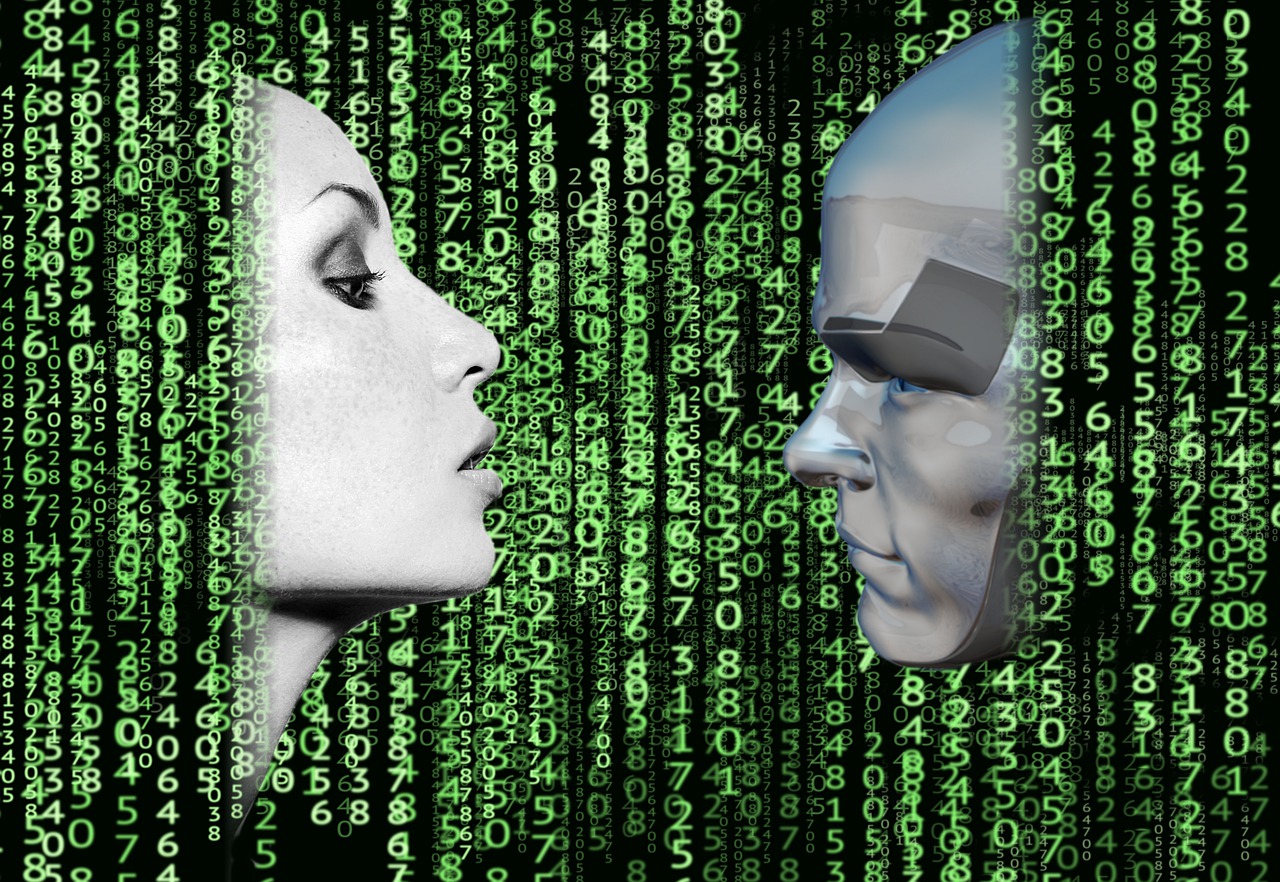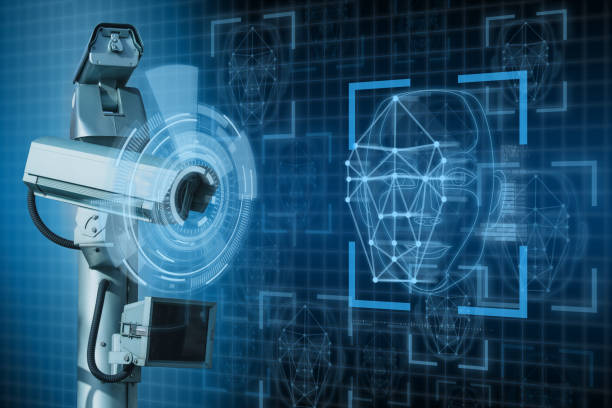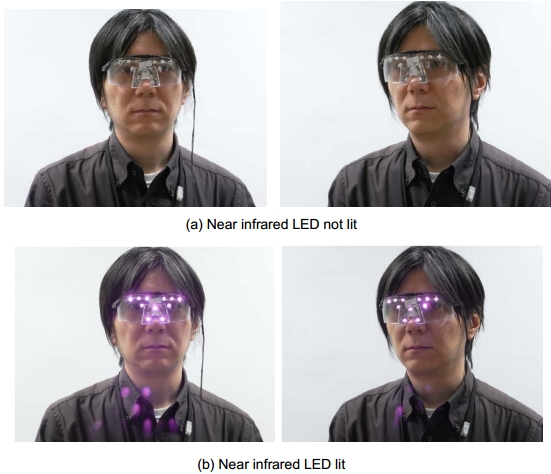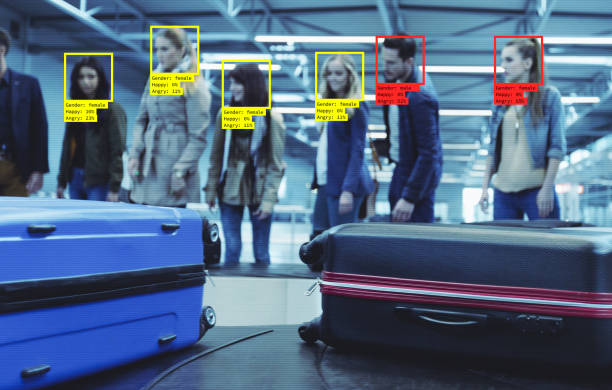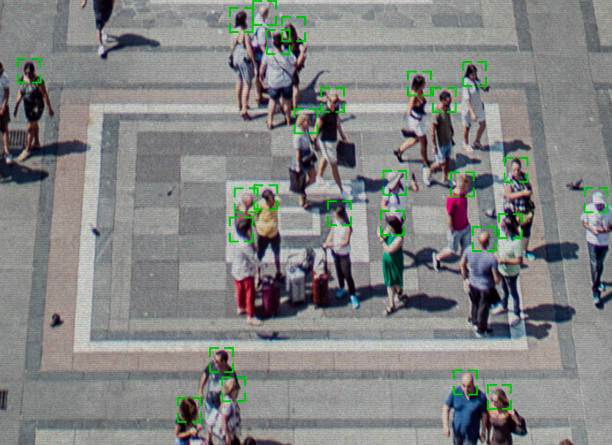The rise of facial recognition technology is impacting the world of designers who now seek ingenious ways to combat the technology. From LED-equipped visors to a variety of transparent masks, the designers are coming up with inventions that aim to successfully thwart facial recognition cameras.
Designers are creating fashion for a counterintuitive purpose, aiming to avoid the cameras. Jip van Leeuwenstein, a Netherlands-based designer created a transparent “surveillance exclusion” mask. The mask hides the wearer’s face from face recognition technology but not from other people.
Van Leeuwenstein writes:
“By wearing this mask formed like a lens it is possible to become unrecognizable for facial recognition software and because of its transparency, you will not lose your identity and facial expressions. So it’s still possible to interact with the people around you.”
One professor at the National Institute of Informatics in Tokyo, Isao Echizen, designed a “privacy visor” that is fitted with near-infrared LED lights. When it is worn, the facial recognition software cannot tell there is a human face ‘hidden’ behind the lights, as explained by Echizen’s tests.
In the United Kingdom, several artists in “The Dazzle Club” have walked the streets of London with their faces painted in red, blue, and black stripes aiming to obfuscate their faces from the city’s 420,000 CCTV cameras, just some of which are utilizing facial recognition technology.
An art and fashion professor at Canada’s Ryerson University, Henry Navarro Delgado, told Reuters:
“There has always been something subversive about streetwear, and one of the new areas of subversion is definitely surveillance and, in particular, facial recognition.”
In September 2019, a British court ruled in favor of the government’s use of facial recognition technology stating that it does not violate privacy and human rights.
Other anti-surveillance apparel includes shiny fabrics. These fabrics are designed to reflect the thermal radiation that drones look for. The beanie hats mainly confuse the facial-recognition system ArcFace while Hyperface makes clothing with patterns designed to confuse artificial intelligence into focusing on the fabric instead of the wearer’s face.
Delgado told Slate:
“The main significance is creating awareness. That’s why fashion is so effective: You have something to say, you wear it, people see you, it’s immediate. Part of the purpose is to make people who normally don’t think about this aware that these technologies are out there, and we’re being watched.”
Privacy Visor
Computers, sensors, and their networks are located in all places due to the developments in the growing information society. Due to their strategic locations, useful services can now be delivered always and in all spaces of our lives.
On the flip side, there is a major problem that privacy information is readily disclosed due to the popularization of portable terminals with built-in GPS, cameras, and other sensors. The invasion of the privacy of several photographed subjects is becoming a social issue due to the photos that are taken without the permission of the photographs and subjects.
These subjects are unintentionally captured in-camera images by the portable terminals that have built-in cameras that are getting released by the photographer on SNS together with a lot of photographic information.
Due to the developments in facial recognition technology in Facebook, Google images, and the rise of portable terminals that append photos with geotags, people’s information is being disclosed and published without their consent. In that context, there is a need for measures to be created to prevent invasion of privacy caused by photos taken in secret and unintentional captures in the camera images.
Unintentional capture in camera images is already an issue in Europe and other regions. Based on an experiment done by Carnegie Mellon University (CMU), over 30% of the participants had their names identified by comparison with the information in their photos. There were other cases where some social security numbers and their private interests were disclosed from the photos.
Due to the fears that arise about the invasion of privacy from SNS facial recognition functions, the European Union requested the invalidation of facial recognition in Facebook that was intended for European users.
Based on that backdrop, various developers have created new technology to protect the photographed subjects from invasions of their privacy resulting from secret and unintentional captures in the camera images. A Privacy Visor is among the best of these devices. Notably, it comes installed with a near-infrared LED that is designed to append noise to the photographed images without affecting human visibility in any manner.
UK Court Ruled On Facial Recognition Technology
A British court said that a police force’s use of facial recognition technology to hunt for suspects was unlawful. The ruling was hailed by privacy campaigners as a ‘major victory’ in their fight against excessive use of surveillance technology.
The judges described the case as the first of its kind worldwide and the Court of Appeal discovered that South Wales Police (SWP) had breached data protection, privacy, and equality regulations. SWP is the first British force that adopted facial recognition technology.
Ed Bridges was the appellant in this case. The resident of Cardiff, Wales had lost an earlier case when the High Court dismissed his allegation that police had breached his human rights by scanning his face without any consent. One lawyer for civil rights group Liberty that represented Bridges, Megan Goulding, said:
“The Court has agreed that this dystopian surveillance tool violates our rights and threatens our liberties. It is time for the Government to recognise the serious dangers of this intrusive technology. Facial recognition is a threat to our freedom – it needs to be banned.”
SWP mentioned that it would not appeal that judgment. However, it insisted that it would remain committed to the careful and extensive development and deployment of the technology. Deputy Chief Constable Jeremy Vaughan stated:
“The whole aim of facial recognition technology is to keep the public safe and assist us in identifying offenders and protecting communities from individuals who pose a risk. I believe the public will continue to support our use of all the available methods and technology to keep them safe, providing what we do is legitimate and proportionate.”
From the airports to the malls, facial recognition technology is increasingly pervasive globally, increasing worries over privacy and discrimination, with the naysayers saying that the technology is prone to errors. It tends to misidentify ethnic minorities.
South Wales Police has been testing facial recognition since 2017, deploying multiple cameras to check random passersby against a huge database of offenders at many locations, including rock concerts and football matches, based on its site.
Any identified suspect can be stopped on the spot, while others are not seen and their data is discarded, it stated. SWP mentioned that the technology has resulted in up to 61 arrests including for theft and robbery, and court warrants.
The 37-year-old civil rights campaigner, Bridges, complained that his face was scanned at an anti-arms protest and on a second occasion when he was doing shopping for Christmas. While the lower court said that the police’s action was lawful, the ruling upheld three out of five points that Bridges made in his appeal.
This court stated that the police were given wide discretion, with no defined guidance on where the technology may be used and who might be put on a watchlist. It also said that SWP failed to take great steps to determine whether its software had any form of gender or racial bias and that an adequate impact assessment needed to process sensitive data was deficient.
Bridges was happy with the ruling. He said:
“We should all be able to use our public spaces without being subjected to oppressive surveillance.”
Facial Recognition In The US
Analysis shows that surveillance cameras are common in most city streets in the United States. However, most of these cameras are not installed with facial recognition technology. In China, the story is different because millions of their cameras are equipped with facial recognition software.
In May 2019, San Francisco became the first city in the United States to ban facial recognition technology on city property, not including the airports. City councilor Aaron Peskin said:
“Good policing does not mean living in a police state. Living in a safe and secure community does not mean living in a surveillance state.”
Daniel Castro of the Information Technology and Innovation Foundation said that such comparisons are not entertained. He said:
“In reality, San Francisco is more at risk of becoming Cuba than China — a ban on facial recognition will make it frozen in time with outdated technology. Governments can use facial recognition to efficiently and effectively identify suspects, find missing children or lost seniors, and secure access to government buildings.”
Results acquired from a datainnovation.org survey indicate that many Americans would agree with Castro. The Surveyors noted:
“There were some differences in these opinions based on age, with older Americans more likely to oppose government limits on the technology. For example, 52% of 18 to 34-year-olds opposed limitations that come at the expense of public safety, compared to 61 percent of respondents ages 55 and older. In addition, women were less likely to support limits than men. For example, only 14 percent of women support strictly limiting facial recognition if it comes at the expense of public safety, versus 23% of men.”
Although some of the inventions seem to be quite effective, their primary purpose seems to be to raise awareness about various types of facial recognition technology. In the United States, studies show that a majority of Americans would oppose these developments which would majorly limit the government’s use of facial recognition technology.
